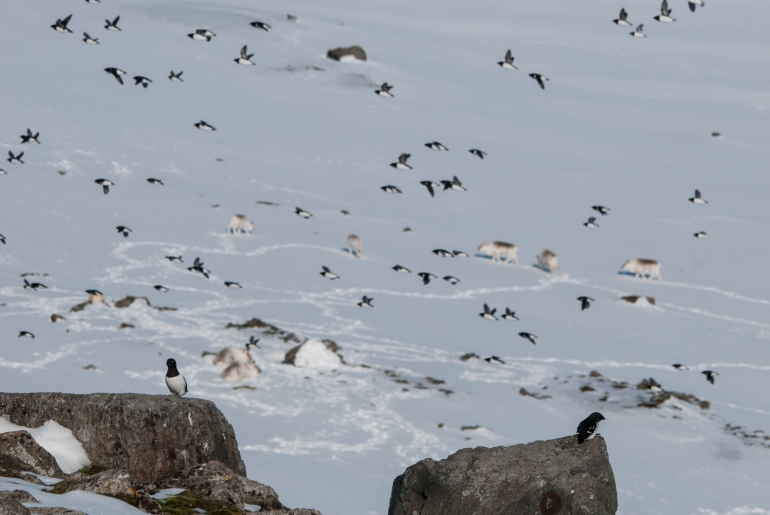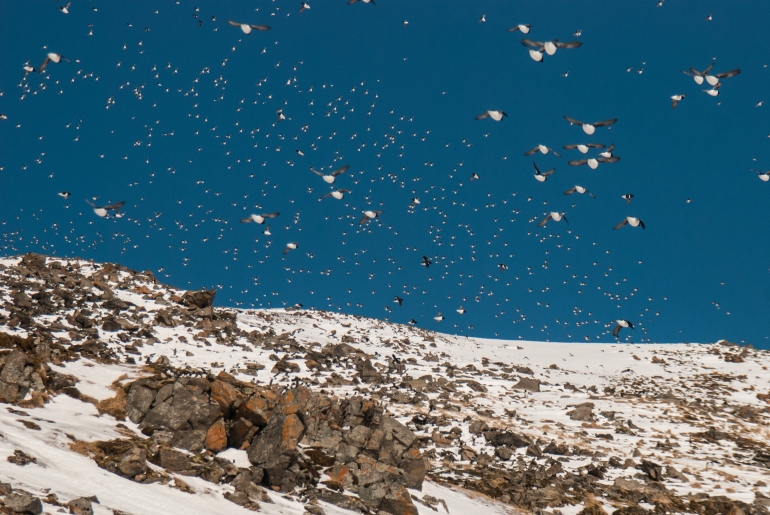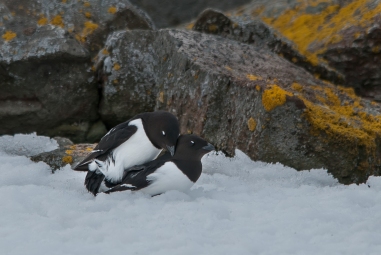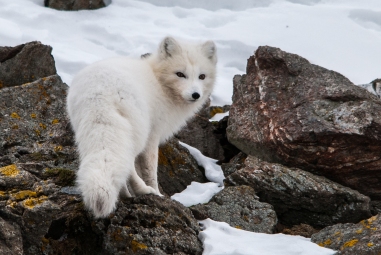
A romantic approach to the scientific problem of nesting ecology of little auks was growing in my mind since 2007. It was the first time I landed in Longyearbyen and I was overwhelmed. I was on the airplane for the first time in my life and there were three stops on the way. I landed in the Arctic (!) and was supposed to get on a vessel in a coal port (from where coal used to be loaded on the ships) and start my master program – finding out as much as possible about seabird distribution on Greenland Sea. The next year I couldn’t continue the observations because of some technical constraints but my supervisor sent me to the biggest little auk colony in the area, to Hornsund Fjord, where Polish Research Station is located, in order to gather enough data to write a master thesis.

Then, over the next two summers, I investigated different aspects of little auk’s ecology with my colleagues in that huge colony and I was falling in love with that place. I felt very much like at home. Long story short, I decided, that I want to try living in the Arctic and I became a member of the 34. expedition to Polish Polar Station in Hornsund in 2011/2012. We left Poland at the end of June 2011 and after 8 stormy days at sea, we arrived in the Station. This time it felt so much different. I was not a scientist-guest anymore, it was my HOME for the next 12 months. I would like to dedicate those 12 months a series of entries on this blog, that one day, will turn into a book so I won’t get into details now. Let’s focus on the auks. The Little Auks.
The idea for my PhD project was to map the colonies. In the first place, I wanted to find out, how many little auks are there, where exactly are they, and if there are any patterns of their distribution. I heard of little auk’s colonies in Greenland, which stretch continuously over kilometers of mountain slopes giving this crazy number of 33 million pairs on the west coast and 3,5 million pairs on the east coast. I wanted to know, why then, colonies in Spitsbergen are not that numerous, why are they scattered or, on the contrary, clustered in some areas.

I heard from people, that this is not a topic for Nature or Science magazines. It’s too simple. It is too basic. I should, in the opinion of many, focus on scientific questions of higher value. I proceeded because there were (and still are) people in my life, that show amazing support and they said: “keep going”. It was a battle to get enough funds for this project. I wanted to go to places, that no one else had scientific interest to go to so I couldn’t find anyone to collaborate with and share the costs and troubles of logistics.

After 6 years my doctoral studies “adventure”, which now I recall as a battle in every possible field, career-wise and private, was over. By the way, I find it heartening, that the problem of anxiety, depression and lack of self-confidence is destroying health of many PhD candidates (yay! I was not alone!). Here, is an article in, Nomen omen, Nature about this phenomenon.
ANYHOW.
Just a couple of days ago my paper about breeding colony location preferences of little auks was published! It’s out there and it makes me quite proud. It sums up all the struggles along the way.
It’s a great piece of work (humble, I know) where different aspects of nesting ecology are discussed. The placement of colonies may seem strictly “geographic” – how far from the coast, how high above the sea level, how steep is the slope. But I also analyzed the geology of the slopes and distance from the foraging grounds, which I could calculate thanks to the at-sea observations of little auks that my colleagues and I performed a few years back. I also calculated what is the aspect of every and each colony (meaning, southern, western etc. exposition) and a sum of solar energy delivered to every one of the spots in question. I created a database of absent location so together with my coauthors we could model the probability of colony occurrence. In fact, having similar data on the environmental factors for Greenland, we could also calculate the probability of colony occurrence there… but that’s a plan for future.
We created NEW MAPS! The maps are showing for the first time the location and size of the little auk colonies along the west and north-west coast of Spitsbergen in great detail (the east coast is virtually little auk-free). And, we got the number – according to our estimates based on visits to the colonies, there are 728 529 pairs of Little Auks breeding in Spitsbergen!!!!!!!!!!!
But, why would someone want to know all that? Why is it important?
Seabirds (little auks, kittiwakes and murres/guillemots) are nesting in massive colonies around Spitsbergen. The amount of guano they deposit in rather small, restricted area is enormous. This leads to the development of lush, green tundra on the footsteps of every seabird colony in the Arctic. The tundra is a key factor for survival of herbivores, such as reindeers and geese. Tundra is also nesting spot for eider ducks, purple sandpipers, skuas and many other birds.
The tundra has a very specific name: ornithocoprofilic tundra. This is very much different from other forms of tundra. Some scientists resent the name, but the research on biodiversity and communities of microorganisms, insects and water bears shows, that the tundra on the footsteps of a seabird colony is a very special spot.

Little auks are important not only for herbivores and tundra. When it comes to predators, there are two, that rely on the little auks as a source of food: glaucous gull and polar fox (polar bears sometimes wander into the colonies but no predation has ever been observed).
Glaucous gulls rob nests (chicks and eggs) but are also capable of catching an adult in the flight. Polar foxes scan the colonies constantly in search of careless birds. Wherever a bird colony is, there is a polar fox den or two. Foxes will always hang around bird colonies in the Arctic, the survival of litter depends almost solely on the parents’ skills of capturing seabirds. Geese are very good at defending their offspring, and ducklings, once they hatch they stay on the water, so seabird colonies are crucial for the foxes.
Given the above we can say, that little auks are a kind of a link between the marine and land ecosystem – they spent all their life at sea, but they breed on land, enabling other species to thrive.
With the ongoing climate changes that are especially pronounced in the Arctic, the more we know about the most numerous breeding arctic seabird, the better. With having their biological response to the changes recognized, we can better understand the coupled mechanisms of both marine and land arctic ecosystems. The way the birds react to the changes can give us clues on whether the birds can cope with the changes; how much longer can they cope, how much of elasticity can they perform (for example in switching from favorite prey to less favorite) and how would all that affect the terrestrial species communities relying on the existence of seabird colonies.












